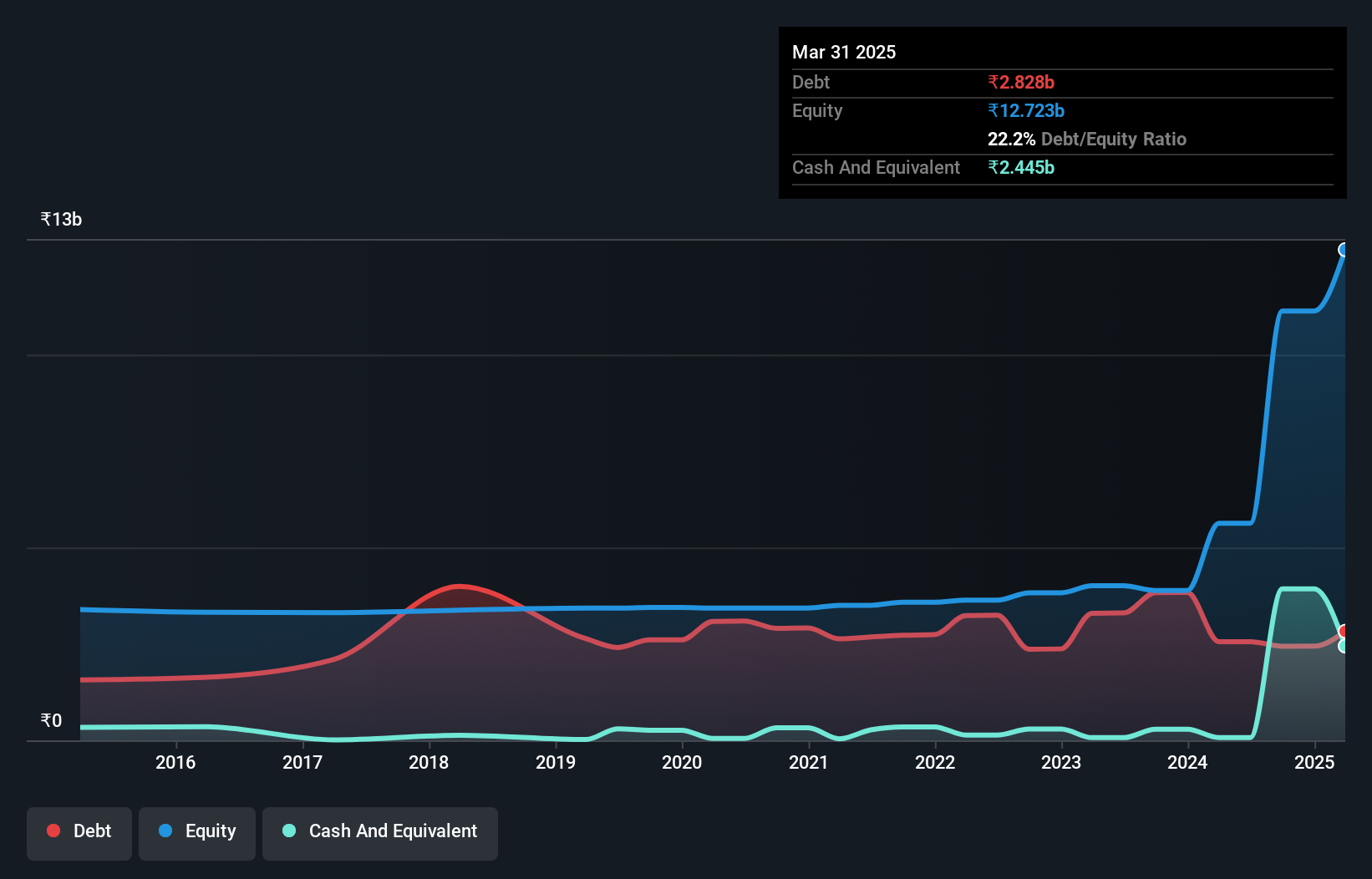Legendary fund manager Li Lu (who Charlie Munger backed) once said, 'The biggest investment risk is not the volatility of prices, but whether you will suffer a permanent loss of capital.' So it seems the smart money knows that debt - which is usually involved in bankruptcies - is a very important factor, when you assess how risky a company is. Importantly, Transformers and Rectifiers (India) Limited (NSE:TARIL) does carry debt. But should shareholders be worried about its use of debt?
What Risk Does Debt Bring?
Debt assists a business until the business has trouble paying it off, either with new capital or with free cash flow. Part and parcel of capitalism is the process of 'creative destruction' where failed businesses are mercilessly liquidated by their bankers. However, a more common (but still painful) scenario is that it has to raise new equity capital at a low price, thus permanently diluting shareholders. Of course, debt can be an important tool in businesses, particularly capital heavy businesses. The first step when considering a company's debt levels is to consider its cash and debt together.
What Is Transformers and Rectifiers (India)'s Debt?
As you can see below, at the end of March 2025, Transformers and Rectifiers (India) had ₹2.83b of debt, up from ₹2.56b a year ago. Click the image for more detail. On the flip side, it has ₹2.44b in cash leading to net debt of about ₹383.1m.

How Healthy Is Transformers and Rectifiers (India)'s Balance Sheet?
The latest balance sheet data shows that Transformers and Rectifiers (India) had liabilities of ₹8.01b due within a year, and liabilities of ₹1.11b falling due after that. Offsetting these obligations, it had cash of ₹2.44b as well as receivables valued at ₹4.79b due within 12 months. So its liabilities total ₹1.89b more than the combination of its cash and short-term receivables.
Having regard to Transformers and Rectifiers (India)'s size, it seems that its liquid assets are well balanced with its total liabilities. So it's very unlikely that the ₹148.5b company is short on cash, but still worth keeping an eye on the balance sheet. But either way, Transformers and Rectifiers (India) has virtually no net debt, so it's fair to say it does not have a heavy debt load!
Check out our latest analysis for Transformers and Rectifiers (India)
We measure a company's debt load relative to its earnings power by looking at its net debt divided by its earnings before interest, tax, depreciation, and amortization (EBITDA) and by calculating how easily its earnings before interest and tax (EBIT) cover its interest expense (interest cover). Thus we consider debt relative to earnings both with and without depreciation and amortization expenses.
Transformers and Rectifiers (India)'s net debt is only 0.12 times its EBITDA. And its EBIT easily covers its interest expense, being 10.2 times the size. So you could argue it is no more threatened by its debt than an elephant is by a mouse. Better yet, Transformers and Rectifiers (India) grew its EBIT by 175% last year, which is an impressive improvement. That boost will make it even easier to pay down debt going forward. The balance sheet is clearly the area to focus on when you are analysing debt. But ultimately the future profitability of the business will decide if Transformers and Rectifiers (India) can strengthen its balance sheet over time. So if you want to see what the professionals think, you might find this free report on analyst profit forecasts to be interesting.
Finally, a company can only pay off debt with cold hard cash, not accounting profits. So the logical step is to look at the proportion of that EBIT that is matched by actual free cash flow. Considering the last three years, Transformers and Rectifiers (India) actually recorded a cash outflow, overall. Debt is far more risky for companies with unreliable free cash flow, so shareholders should be hoping that the past expenditure will produce free cash flow in the future.
Our View
Happily, Transformers and Rectifiers (India)'s impressive EBIT growth rate implies it has the upper hand on its debt. But the stark truth is that we are concerned by its conversion of EBIT to free cash flow. When we consider the range of factors above, it looks like Transformers and Rectifiers (India) is pretty sensible with its use of debt. While that brings some risk, it can also enhance returns for shareholders. The balance sheet is clearly the area to focus on when you are analysing debt. However, not all investment risk resides within the balance sheet - far from it. Case in point: We've spotted 1 warning sign for Transformers and Rectifiers (India) you should be aware of.
When all is said and done, sometimes its easier to focus on companies that don't even need debt. Readers can access a list of growth stocks with zero net debt 100% free, right now.
Valuation is complex, but we're here to simplify it.
Discover if Transformers and Rectifiers (India) might be undervalued or overvalued with our detailed analysis, featuring fair value estimates, potential risks, dividends, insider trades, and its financial condition.
Access Free AnalysisHave feedback on this article? Concerned about the content? Get in touch with us directly. Alternatively, email editorial-team (at) simplywallst.com.
This article by Simply Wall St is general in nature. We provide commentary based on historical data and analyst forecasts only using an unbiased methodology and our articles are not intended to be financial advice. It does not constitute a recommendation to buy or sell any stock, and does not take account of your objectives, or your financial situation. We aim to bring you long-term focused analysis driven by fundamental data. Note that our analysis may not factor in the latest price-sensitive company announcements or qualitative material. Simply Wall St has no position in any stocks mentioned.
About NSEI:TARIL
Transformers and Rectifiers (India)
Manufactures and sells transformers in India.
Exceptional growth potential with outstanding track record.
Market Insights
Community Narratives



